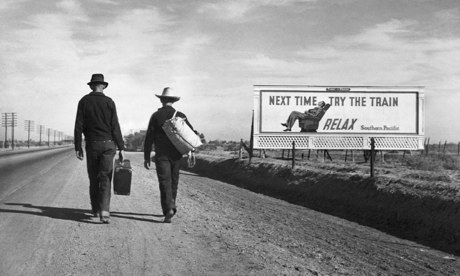In drawing up our blueprint for a new metropolis, what can we learn about its layout from sprawling, stateless Los Angeles – whose grotesque size and dizzying variety of form surely repudiate the very notion of an ideal city? As soon as you think you’ve identified how it looks, how it acts, the condition to which it aspires, or even which nation or culture it belongs to, the opposite conclusion inevitably rushes up to confront you mere minutes down the road.
This lack of definition makes it no easy place to write about, and the challenge has reduced many an otherwise intelligent observer to the comforts of obscurantism and polemic. Nobody understands Los Angeles who thinks about it only through the framework of its entertainment industry, its freeways, its class divisions, or its race relations. I don’t even pretend to understand Los Angeles, but living here I’ve undergone the minor enlightenment whereby I recuse myself from the obligation of doing so.
My own time in LA has, in fact brought me to see many other world cities as theme-park experiences by comparison, made enjoyable yet severely limited by the claims of their images. San Francisco has long strained under the sheer fondness roundly felt for it, or at least for an idea of it, never quite living up to how people imagine or half-remember it in various supposedly prelapsarian states of 20, 40, 60 years ago. New York has similarly struggled with perceptions of it as the ultimate expression of the urban, and even lovers of Paris come back admitting that Paris-as-reality seems hobbled by Paris-as-idea.
I look around my own neighborhood of Koreatown and wonder what set of ideas could ever accommodate it. In its officially just under three, but in practice over five, of the densest square miles it churns business and culture brought straight from not just South Korea but southern Mexico as well. It all happens in and amid the sometimes incongruously grand structures of what they used to call the Ambassador District, an area swanky enough by the standards of 1930s and 40s America that it hosted Academy Awards ceremonies back then. I have a hard time imagining Koreatown emerging quite so robustly in any city contained by a vision.
Read the whole thing at The Guardian Cities.

Post a Comment